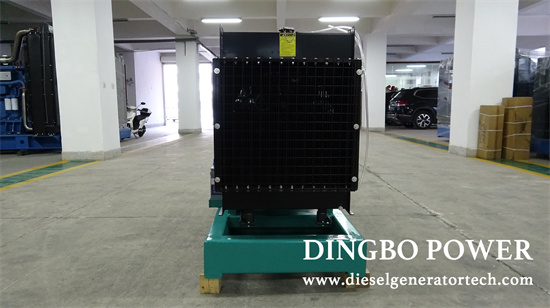Do you know about the research on the noise generation of diesel generator sets? The exploration equipment at coal seam exploration sites usually consists of diesel generator sets, drilling rigs, slurry pumps, etc. These devices emit strong noise during operation. After on-site measurement, the noise of the diesel generator set is 98dB (A). The equipment noise not only affects the physical health of the operators, but also causes pollution to the surrounding residential environment. Control and isolate the noise of the diesel generator set. There are two types of diesel generator sets used in geological exploration, one with an output power of 250kW and the other with a power of 160kW. Due to the frequent use of the 160kW diesel generator set, the work of this project is carried out on the 160kW diesel generator set.

In addition, the original muffler structure is very simple, and its noise reduction must be strengthened. Therefore, the main measures of the project are to adopt sound insulation and improve silencers. The main noise sources of diesel generator sets include fan noise, exhaust noise, combustion noise, mechanical noise, and electromagnetic noise. Fan noise is the noise generated by the periodic impact of rotating blades on air particles, generally dominated by intermediate frequency noise. When diesel generator sets are equipped with silencers, fan noise is an important source of noise. Exhaust noise is the noise generated by the high-temperature and high-speed pulsating airflow discharged from the exhaust pipe of a diesel engine. The frequency of exhaust noise is mainly low-frequency and is related to load and speed.
Combustion noise is the structural vibration caused by the combustion of the gas in the cylinder generated by the mixer, transmitted to the surface of the internal combustion engine through external and internal transmission channels, and formed by the radiation from the surface of the internal combustion engine. Mechanical noise is the noise generated by the impact and vibration between relative moving parts caused by gas pressure and the inertia of the components. Mechanical noise mainly includes piston knocking noise, gear mechanism noise, valve distribution mechanism noise, bearing noise, high-pressure oil pump noise, and body vibration and noise caused by unbalanced inertia force. Electromagnetic noise is generated by the alternating changes in electromagnetic fields that cause vibration of certain mechanical components or spatial volumes.
Founded in 1974, Dingbo Power Generation Equipment Co., Ltd. is a professional manufacturer of diesel engines, generators and generator sets, and one of the earliest manufacturers of diesel engines, generators and generator sets in China. Since 1992, the company has been a qualified generator set manufacturer inspected by the National Internal Combustion Engine Generator Set Quality Supervision and Inspection Center. Over the years, the company has carried out extensive cooperation with Shanghai Diesel, Weichai, Sweden Volvo, Sino US joint venture Chongqing Cummins, American Qianglu and other companies, and has become a (OEM) supporting factory and technical center. It has 64 sales service departments nationwide, providing users with design, supply, commissioning and maintenance services at any time. Dingbo quality is worth depending on. If you want get more information, please feel free to send email to sales@dieselgeneratortech.com we will pay highly attention on your question.
Comments
Post a Comment